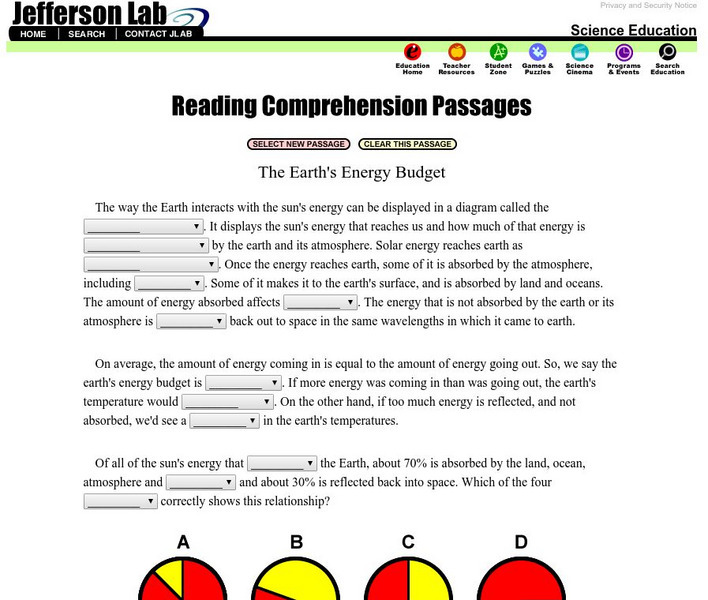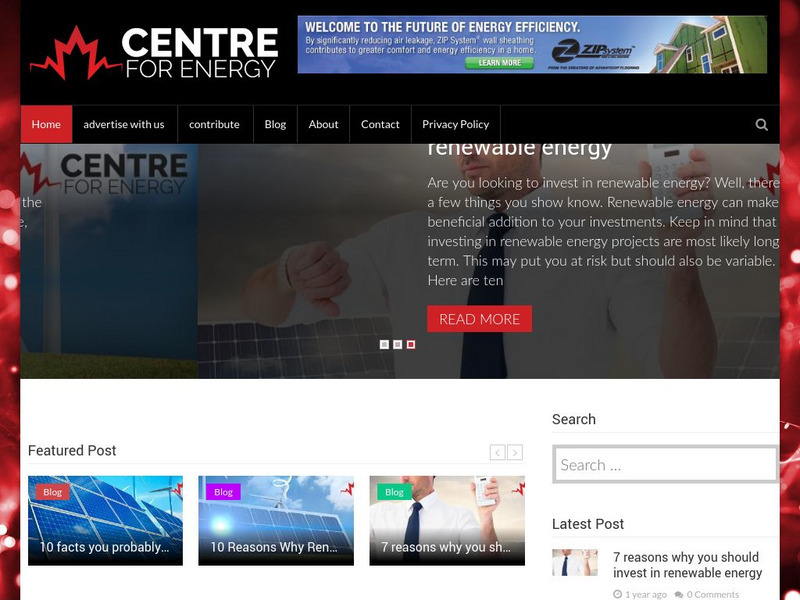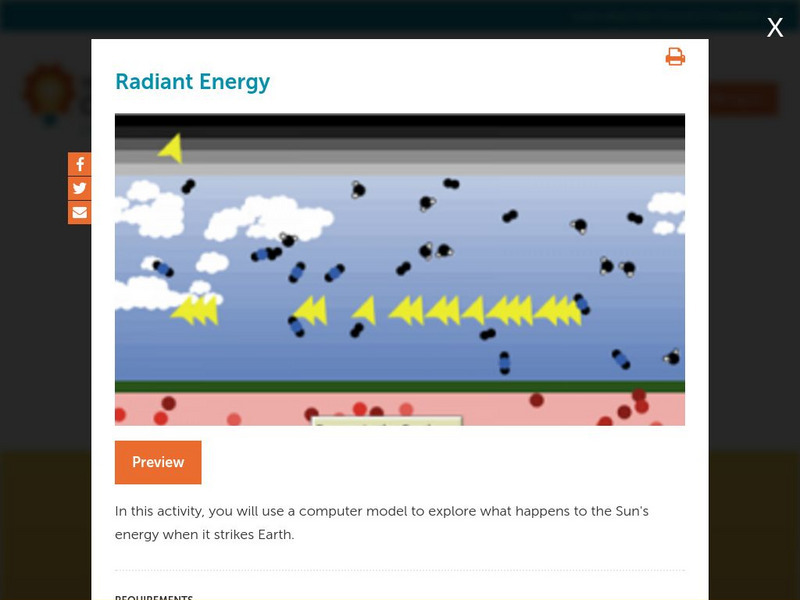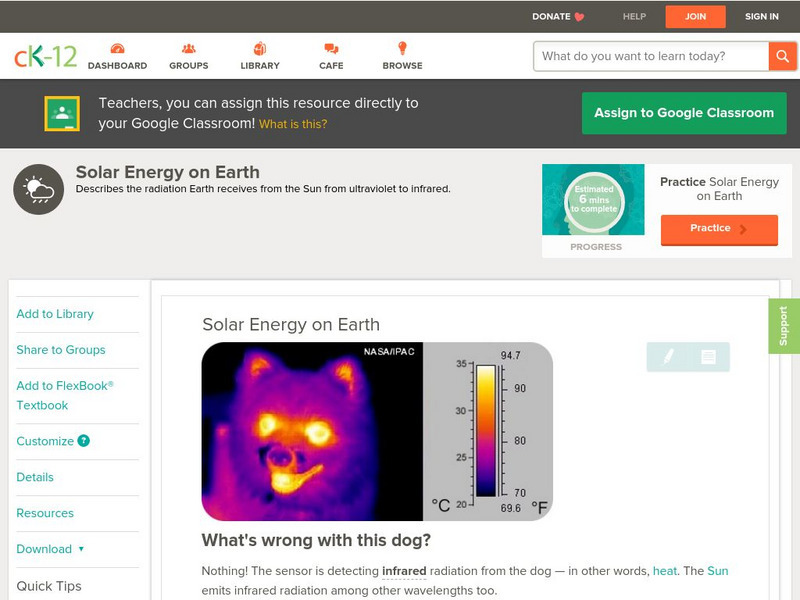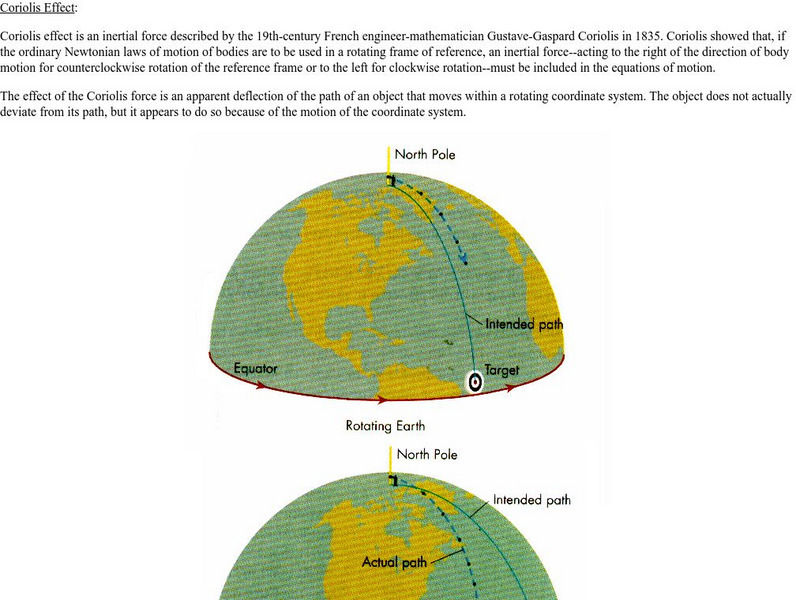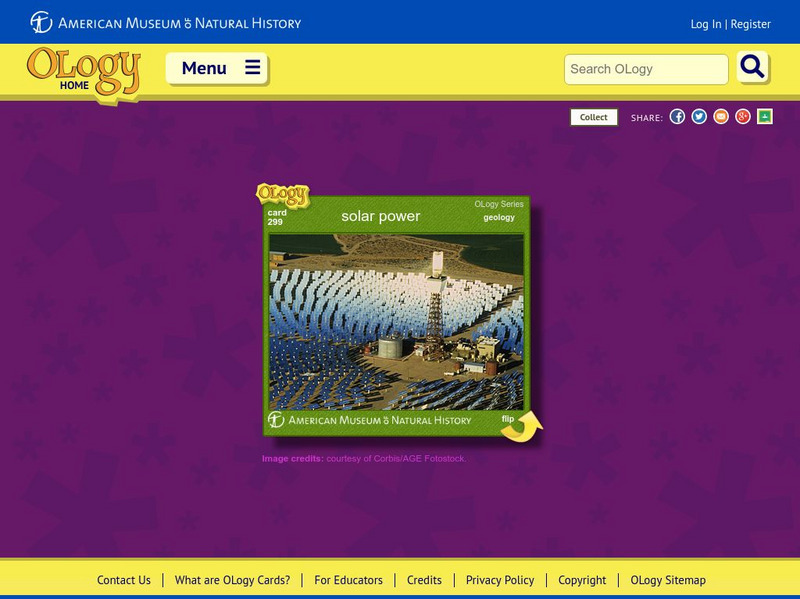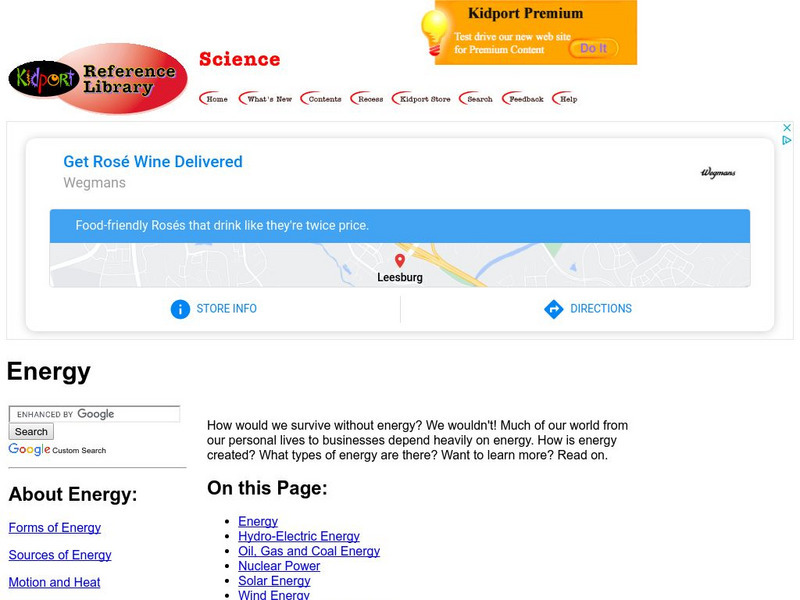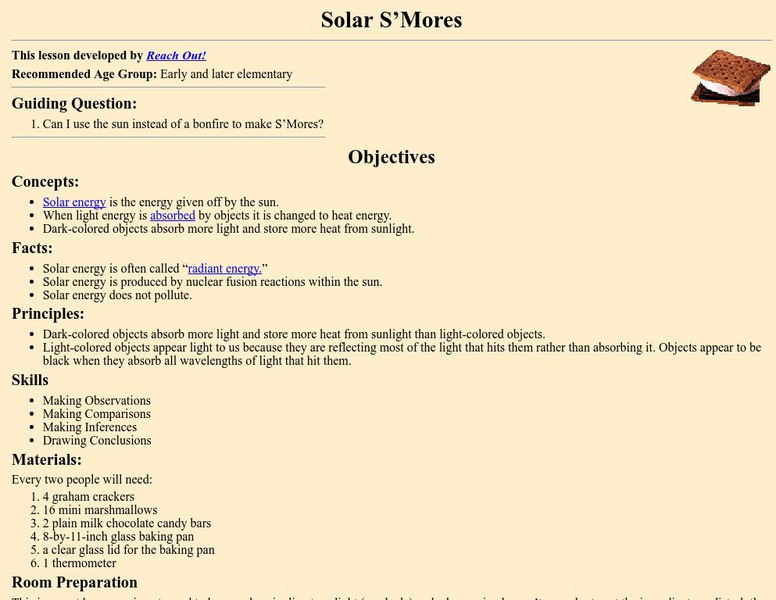Thomas Jefferson National Accelerator Facility
Jefferson Lab: Reading Passages: The Earth's Energy Budget
Read and fill in the blanks of this passage explaining the earth's engergy budget. Each blank has a dropdown menu with choices. When you finish, click CHECK MY ANSWERS. If you pick a wrong answer, the right answer will be displayed along...
Other
Canadian Centre for Energy Information: What Is Solar Energy?
Solar energy is explained well in this module, from its history and how it is produced, to its advantages and disadvantages, and what the future holds for this energy source.
Concord Consortium
Concord Consortium: Stem Resources: Radiant Energy Flow
A virtual lab to look at the physical features of Earth that affect the amount of the Sun's energy that hits Earth. Students investigate how solar and infrared radiations enters and leaves the atmosphere with this model. Virtual lab...
Other
Planet Ark: World Environmental News
Welcome to Planet Ark's daily Reuters World Environment News - the most comprehensive source of environmental news on the Net. To read previous news stories, please use the search engine below to find stories relating to any...
US Energy Information Administration
U.s. Eia Energy Kids: Timelines: Solar Thermal
Timeline of key milestones in the use of solar power as a source of renewable energy.
PBS
Pbs: How Do Solar Panels Work?
We've seen them for years on rooftops, atop highway warning signs, and elsewhere, but how many of us know how solar panels actually work? How do the photovoltaic cells that lie at the heart of them turn sunlight ("photo") into...
CK-12 Foundation
Ck 12: Earth Science: Solar Energy on Earth
[Free Registration/Login may be required to access all resource tools.] A breakdown of the types of energy that Earth receives from the sun.
University of Oregon
University of Oregon: Coriolis Effect
This site from the University of Oregon provides a great explanation of the Coriolis Effect and then gives several chart type examples to help the understanding of it.
Next.cc
Next: Solar Energy
Engage in the activities provided to learn how you can use the sun as a source of energy. Click on the links for further exploration.
CK-12 Foundation
Ck 12: Fourth Grade Science: Physical Science: Energy Resources
[Free Registration/Login may be required to access all resource tools.] Discusses nonrenewable and renewable energy resources. Outlines world energy use and ways to conserve energy.
Teachers TryScience
Teachers Try Science: Where There's Light, There's Hot Food!!!
This unit helps students learn to apply the concept of solar energy conservation. They are introduced to angles and their effect on the amount of light reflected, and they will also design, construct, manipulate, critique, evaluate and...
American Museum of Natural History
American Museum of Natural History: Solar Power O Logy Card
OLogy cards are like virtual baseball cards about all kinds of science topics. This card contains essential facts about solar power.
Other
First Energy: The Electric Avenue: Energy Fun Factory
Here, students can learn all about energy sources and electricity. Activities include games and calculating energy costs in their homes.
Alabama Learning Exchange
Alex: Build a Solar Hot Water Heater
This exercise will allow the learners to explore solar energy by building a simple solar hot water heater with clean two liter soda bottles.
Alabama Learning Exchange
Alex: Understanding Solar Energy. Part 1
This lesson discusses how electromagnetic radiation transfer the sun's energy to earth. This lesson will also talk about the eight types of electromagnetic waves in the electromagnetic spectrum and how each type is used or found in our...
Khan Academy
Khan Academy: Activity: Solar Stadium Challenge
A project for students to imagine they are writing a proposal for a bid to design and construct a football stadium that is heated by solar power. As a structural engineering, the students will be creating this proposal for a new NFL team...
Khan Academy
Khan Academy: Solving the Storage Problem Quiz
Try this quiz about energy storage technologies.
Lawrence Berkeley National Laboratory
Berkeley Lab: The Sun
This page provides a brief discussion of the sun and its energy flow.
McREL International
Mc Rel: Interactions Between Water and the Sun's Energy [Pdf]
A worksheet regarding the interactions between water and the Sun's heat energy. PDF
PBS
Pbs Learning Media: Earth's Albedo and Global Warming
In this interactive activity adapted from NASA and the U.S. Geological Survey, learn about Earth's albedo (the ratio of reflected vs. incident solar radiation), how pollution alters albedo, and how ice-albedo feedback may accelerate...
University of Wisconsin
The Why Files: Positive Energy
A novel idea for converting solar energy to electrical energy. A brief discussion of solar energy collection in space via satellites.
Kidport
Kidport Reference Library: Energy
A simple introduction to energy, offering information on hydro-electric energy, fossil fuels, nuclear power, solar energy, and wind energy.
Michigan Reach Out
Solar S'mores
Students can make s'mores without using a bonfire. This experiment is great to use with the links "Materials that Absorb Solar Energy" and "A Solar Heat Experiment."


